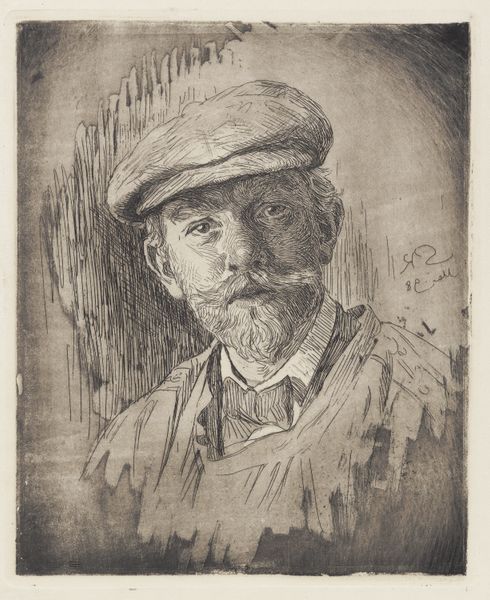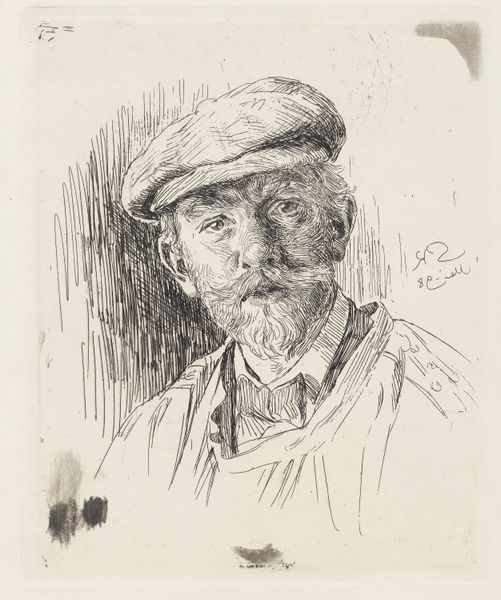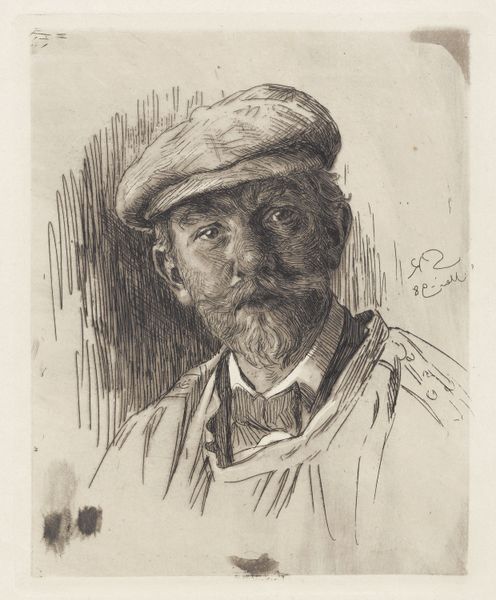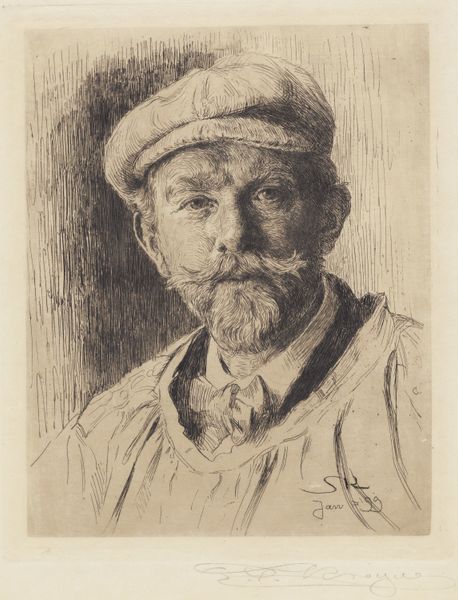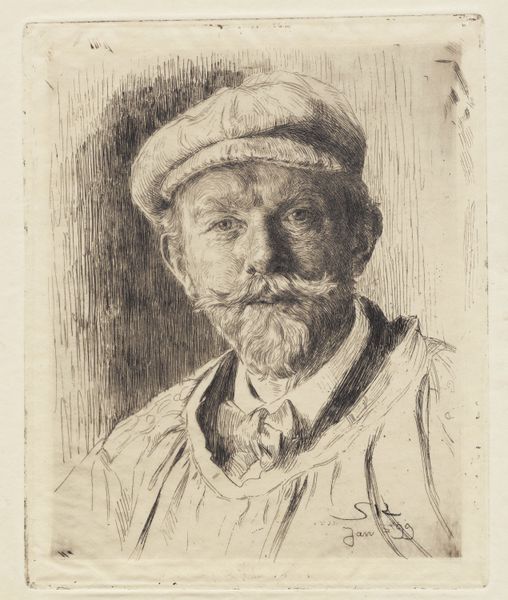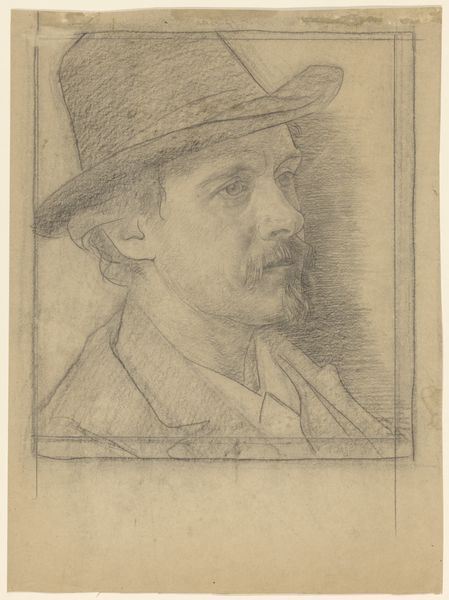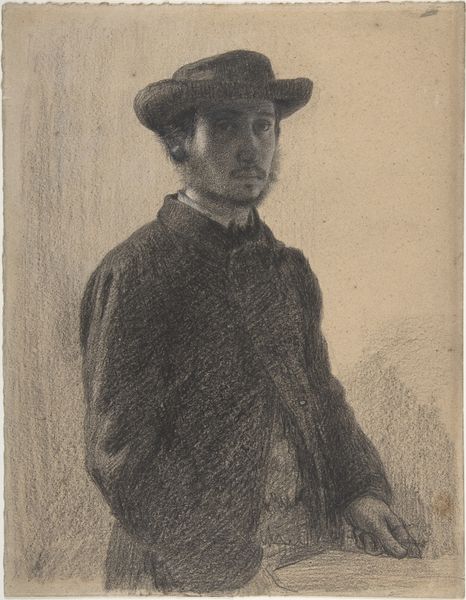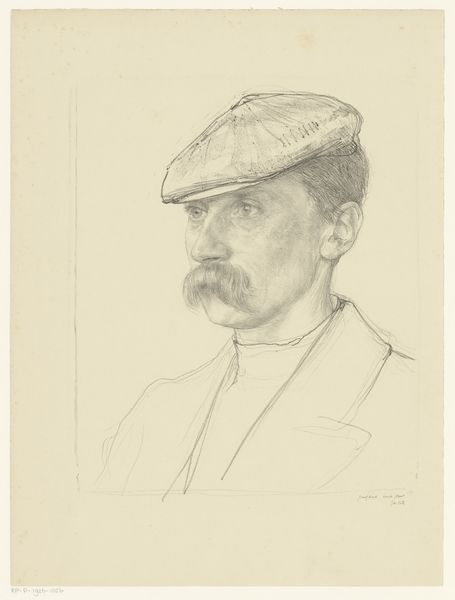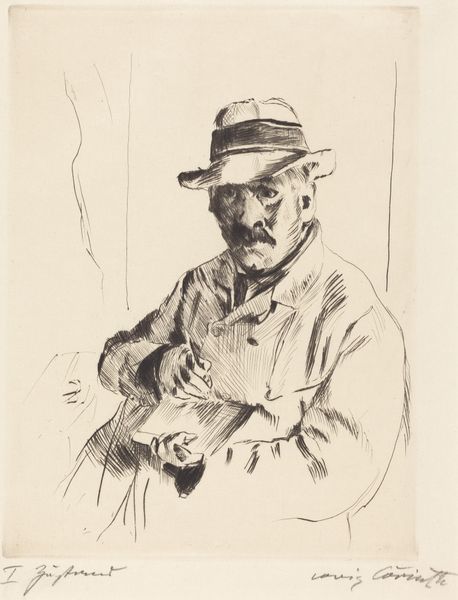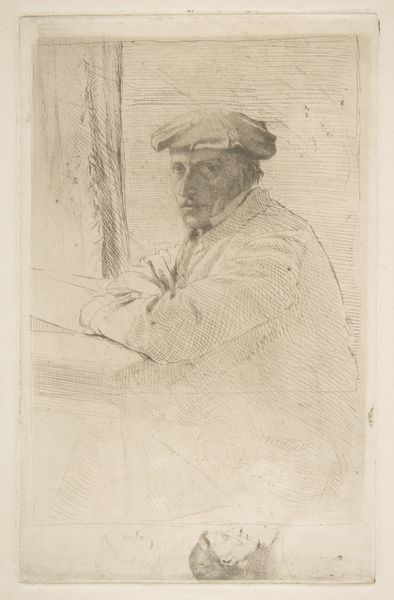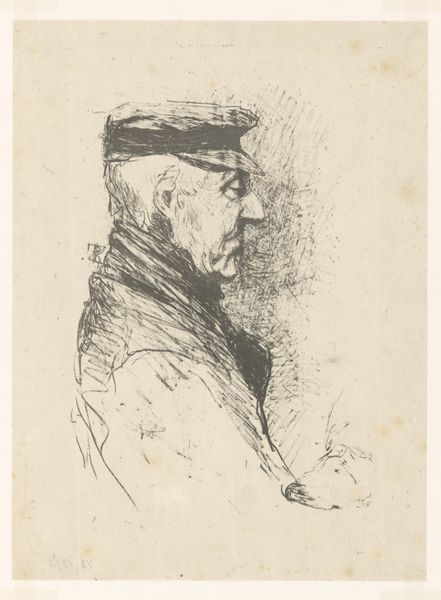
print, etching
#
portrait
#
art-nouveau
#
self-portrait
# print
#
etching
#
portrait reference
#
portrait drawing
Dimensions: 217 mm (height) x 175 mm (width) (monteringsmaal)
Editor: This is P.S. Krøyer’s self-portrait, created as an etching in 1898. The monochromatic palette gives it an intimate, almost vulnerable feel. What social or artistic context might have influenced Krøyer to depict himself in this way? Curator: That's an astute observation. Consider Krøyer's position within the artistic and societal currents of the late 19th century. He was deeply embedded in the Skagen artistic colony, which celebrated naturalism and plein air painting. Yet, this etching, made during a period when Krøyer was struggling with mental illness, offers a strikingly different narrative. How might his personal struggles relate to the public image he cultivates through art? Editor: That’s interesting. It feels almost contradictory, right? This almost romantic artistic movement with his deeply personal battle. Did the art world grapple with the representation of mental health at the time? Curator: Precisely. Mental illness carried a considerable social stigma. His choice to create and exhibit this self-portrait is potentially a radical act, challenging prevailing norms. Do you see this work as solely an introspective look or also potentially a comment on the accepted visual language for representing artists, and perhaps, humanity itself? Editor: I see what you mean. I was so caught up in the face value, in it being a self-portrait, but that almost restricts what I was willing to look for beyond that initial thought. I’ll need to spend more time looking beyond that now! Curator: And that’s the essence of historical inquiry. It's about questioning, contextualizing, and understanding the multilayered dialogues art creates with society. I will definitely ponder more on the potential subversiveness in revealing vulnerability through a "public" act of art, the self-portrait.
Comments
No comments
Be the first to comment and join the conversation on the ultimate creative platform.
